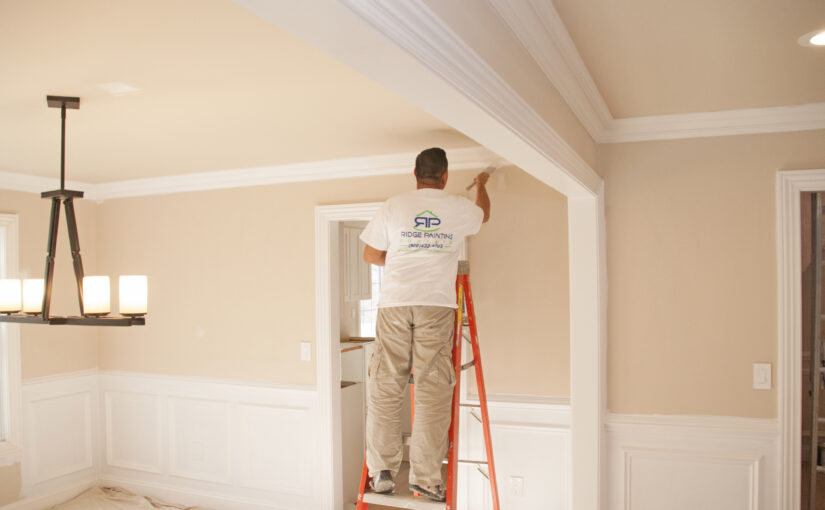Why Is Interior Painting So Expensive?
Interior painting is one of the most popular ways to refresh a home’s look and feel, but many homeowners are surprised by the cost of a professional job. If you’ve wondered why interior painting can be so pricey, this guide breaks down the key reasons—from labor and prep work to paint quality and project complexity. Knowing these factors can help you make informed decisions about your painting project and understand the true value of a high-quality paint job.
1. Labor Costs: Paying for Professional Expertise
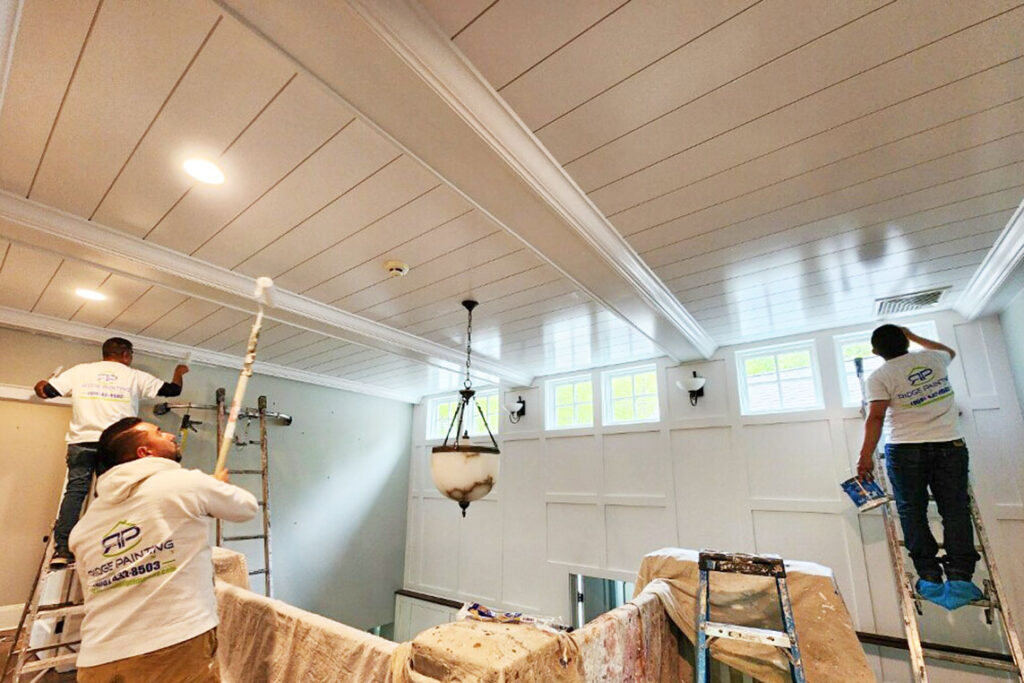
Labor is often the most significant part of the cost in any professional painting project. Professional painters typically charge between $40 and $80 per hour, but this rate can be higher for specialty or complex jobs. Here’s why labor costs for interior painting add up:
- Skill and Experience: Professional painters undergo extensive training to master techniques that ensure a seamless finish. They know how to work efficiently without compromising quality, which means you’re paying for expertise and precision.
- High Walls and Hard-to-Reach Areas: Painting rooms with high walls, vaulted ceilings, or hard-to-reach spots requires special equipment and extra time. Painters need ladders, scaffolding, or even harnesses for tall spaces, increasing the time and effort required. This means higher labor costs, as more skill and equipment are involved.
- Efficiency and Consistency: Professionals bring consistency to every wall and corner, providing a polished look that DIY jobs often lack. The finished product is usually smooth, even, and free from streaks or missed spots—a difference that requires time and precision.
2. Prep Work: The Foundation of a Great Paint Job
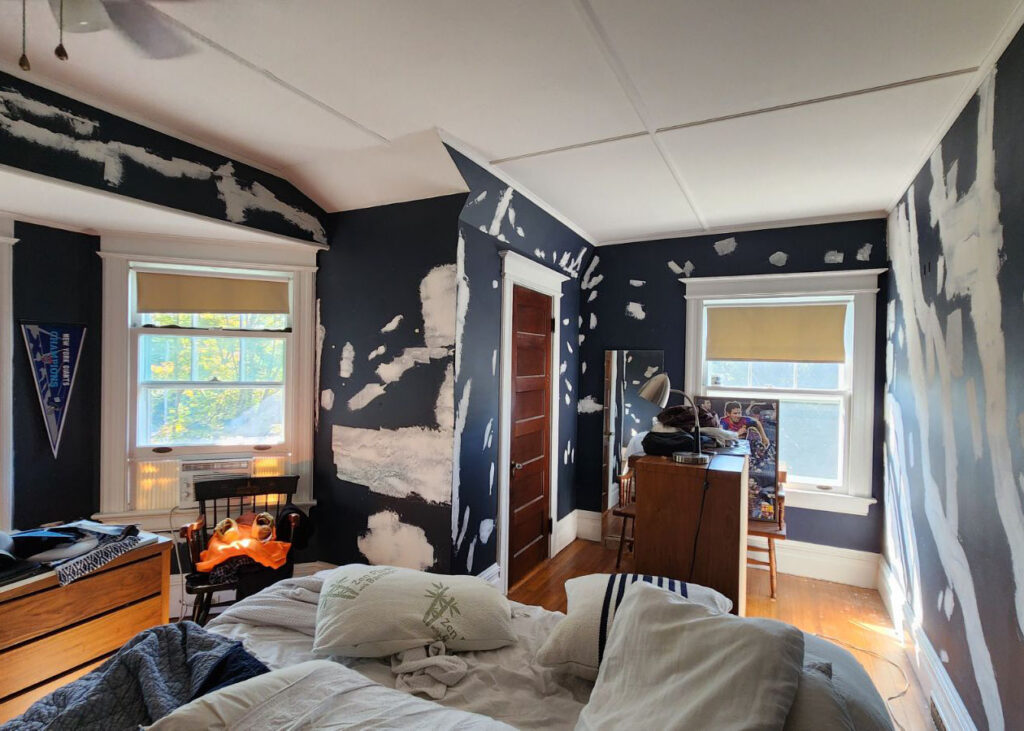
One of the most essential (and time-consuming) parts of interior painting is the prep work. While it may seem like painting is all about applying color, what happens before the paint goes on is crucial. Prep work can include a variety of steps, such as:
- Cleaning and Sanding: Walls often have dust, stains, and rough patches that need to be cleaned or sanded before painting. Any grease, dust, or residue can interfere with how paint adheres, making a thorough cleaning essential for a long-lasting finish.
- Patching and Caulking: Any imperfections, holes, or cracks in walls must be patched and caulked to create a smooth surface. This attention to detail requires skill and patience, and it ensures the walls are free from visible defects.
- Priming: Priming is especially important if the walls are being painted a new color, particularly a lighter shade over a darker one. Primers create a base layer that allows paint to adhere more effectively, and they can also enhance durability and color consistency.
Prep work can take hours, even before the first coat of paint is applied, and it’s a step that many DIYers skip. But without proper preparation, the paint may chip, peel, or look uneven over time, making professional prep work a wise investment.
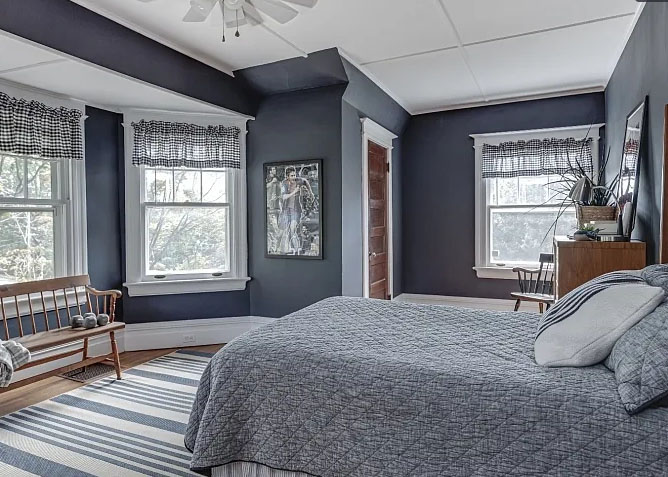
3. Paint Quality: You Get What You Pay For
Not all paint is created equal, and professional painters typically use high-quality paints for their projects. Quality paint may cost more upfront, but it offers several long-term benefits:
- Better Coverage: High-quality paints usually provide better coverage, which means fewer coats are needed. This can save both time and money, especially when covering a dark color with a lighter shade.
- Durability and Longevity: Top-quality paints resist fading, chipping, and scuffing. They often contain better pigments and binders, which ensure the color stays vibrant and the finish lasts longer. Cheaper paints, on the other hand, may need to be repainted more frequently.
- Specialized Formulas: Professional-grade paints include formulations for specific surfaces or environments, such as moisture-resistant paint for bathrooms or scuff-resistant paint for high-traffic areas. These specialized paints might cost more initially but can save you money on maintenance and repainting in the long run.
4. Project Complexity: Each Project Is Unique

The complexity of an interior painting project affects both time and costs. Some aspects of complexity include:
- Dark Colors vs. Light Colors: Painting over a dark wall with a light color usually requires multiple coats of paint to achieve full coverage. This increases both material and labor costs, as more paint and additional application time are needed.
- Detailed Work and Accent Walls: Intricate work like painting trim, doors, or accent walls requires meticulous attention to detail. These areas are often painted in a different color or finish, requiring extra care and precision.
- Ceilings and Multiple Rooms: Painting a single room may be straightforward, but tackling multiple rooms, including ceilings, involves additional labor and time. Painters need to set up and move equipment, ensuring each space receives an equally high-quality finish.
5. Surface Area: More Square Footage, More Cost
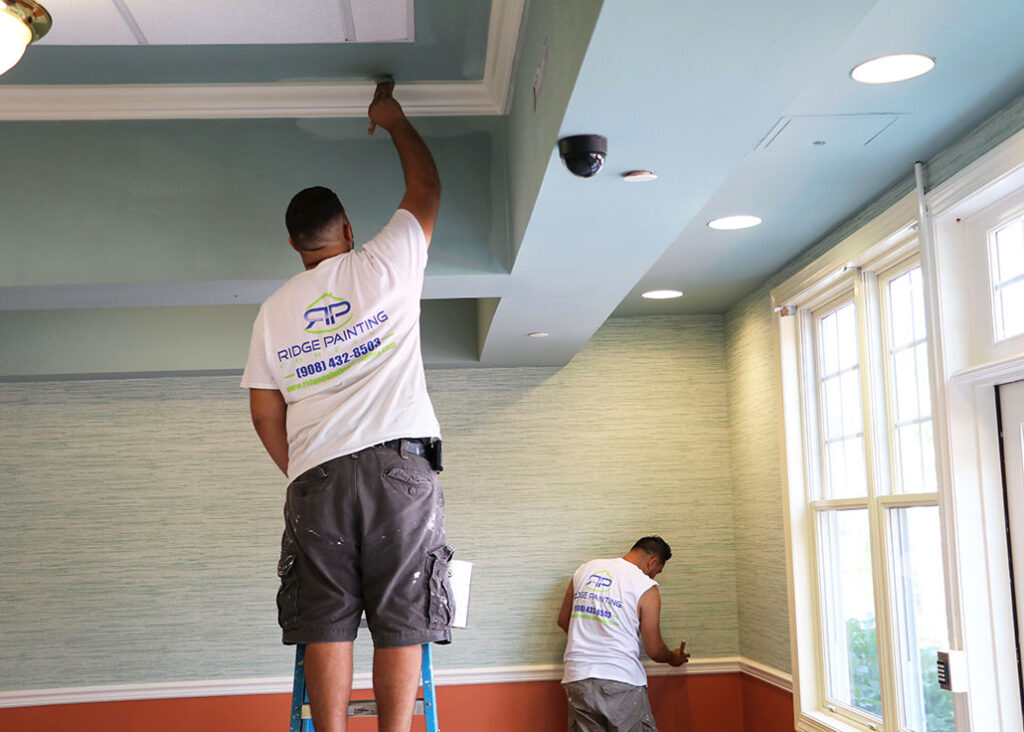
One of the most straightforward factors in interior painting costs is the size of the area being painted. Larger areas naturally require more paint and time, resulting in higher costs. However, surface area costs aren’t always about square footage alone:
- Wall Texture: Textured walls, such as stucco or heavily textured drywall, require more paint than smooth surfaces. Textures absorb more paint and may also need special application techniques, leading to additional costs.
- Obstacles and Architectural Details: Rooms with crown molding, intricate woodwork, or built-in shelving require careful, detail-oriented painting. These features can slow down the process and increase costs due to the additional work required.
6. Paint Color: Color Choice Can Influence Cost
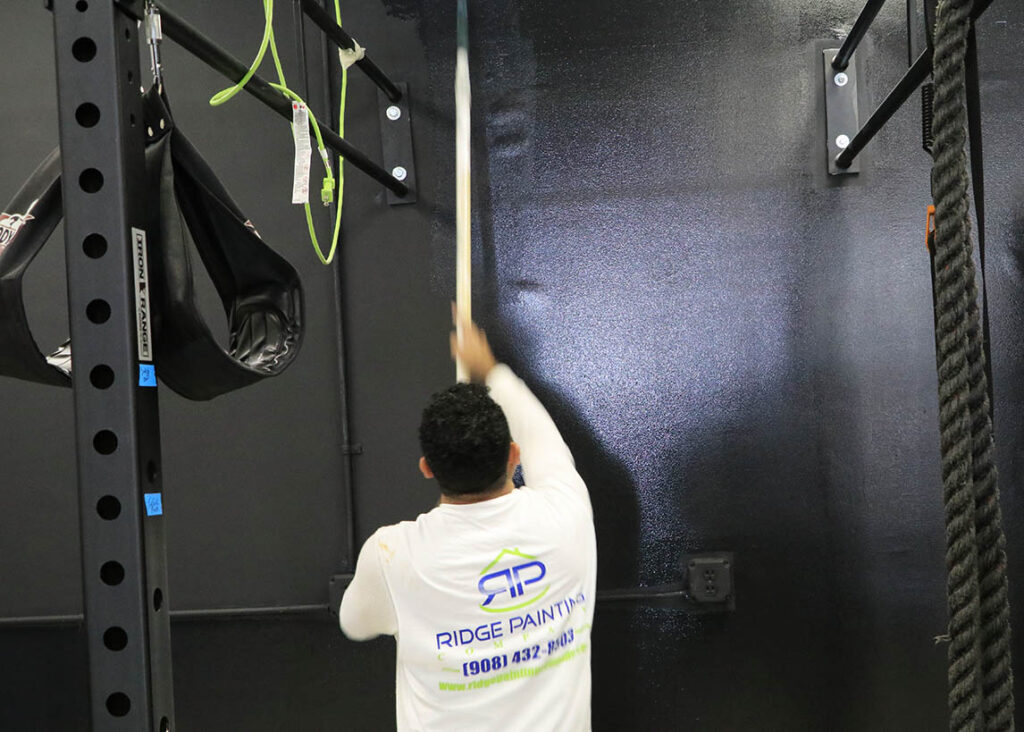
The color you choose for your interior can have a surprising effect on the total cost of the project. This is because:
- Darker Colors Require More Coats: Dark shades often need extra coats to achieve a uniform look, especially when applied over a light-colored base. Each additional coat adds both material and labor expenses.
- Custom or Rare Colors: Some colors are custom-mixed or rare, which may increase the price per gallon. High-end, designer colors, for instance, may have pigments that are more expensive to produce.
- Color Matching: If you’re trying to match a specific color or shade, painters may spend additional time mixing and adjusting the color to ensure a perfect match. This extra step can increase both material and labor costs.
7. Project Management: Ensuring Efficiency and Quality Control
A reputable painting company typically assigns a project manager to oversee larger interior painting jobs. This might seem like an additional expense, but it’s an investment in quality control and client satisfaction.
- Scheduling and Coordination: Project managers handle the scheduling and coordination of labor and materials, ensuring that each stage of the project flows smoothly. They manage timelines, so your project is completed on schedule.
- Quality Control: Project managers monitor the work, ensuring the highest standards are maintained at every step. This means catching any errors or inconsistencies early, reducing the need for costly rework or touch-ups later.
- Client Communication: Project managers keep you informed, addressing any concerns or changes needed throughout the project. This level of communication provides peace of mind and ensures the project meets your expectations.
8. Product Selection: Different Surfaces, Different Paints
Interior painting involves more than simply picking a color. Different surfaces—such as drywall, wood, metal, or tile—may require different types of paint or finishes, which can impact cost:
- Specialty Paints: Certain surfaces require unique paints, such as mildew-resistant formulas for bathrooms or fire-resistant coatings for specific areas. These specialty paints tend to cost more than standard paints but add value by increasing safety and durability.
- Finish Selection: Paint finishes, like matte, eggshell, satin, or gloss, each have unique characteristics suited to different areas. High-traffic areas might benefit from durable, washable finishes, which are typically more expensive.
9. Long-Term Value: Investing in a Lasting Paint Job
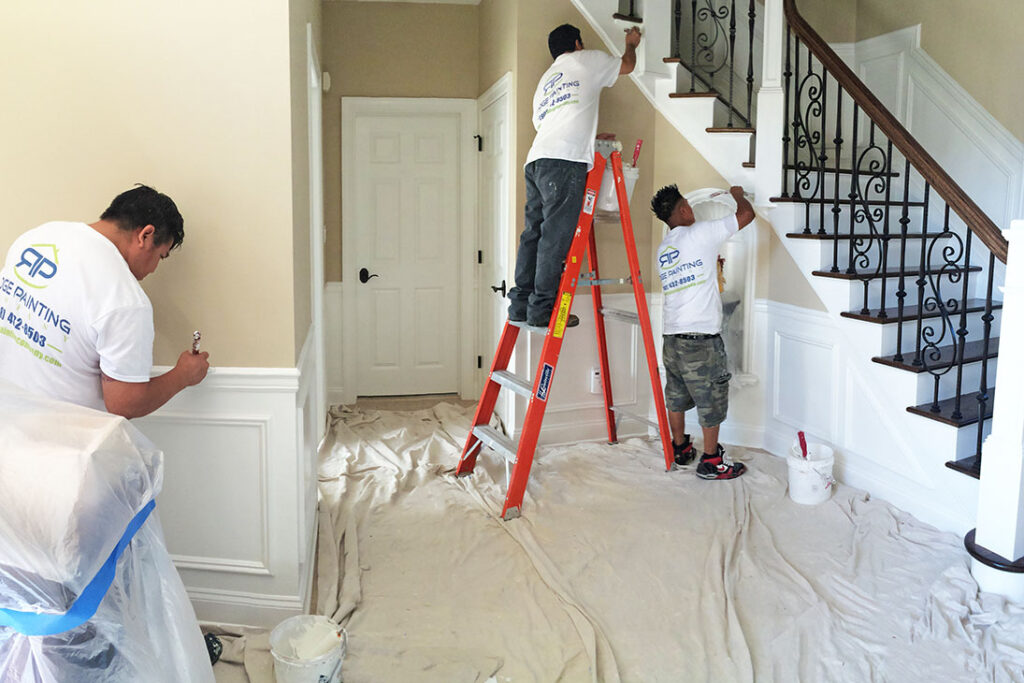
While high-quality interior painting may be expensive, it offers long-term value that can save money over time. Investing in professional work can be more cost-effective than cutting corners, as it reduces the need for frequent touch-ups or repaints.
- Increased Home Value: A well-done interior paint job can enhance the overall appeal of your home, increasing its market value. Buyers often notice details like clean, even paintwork, which can make a property more attractive and valuable.
- Durability and Maintenance Savings: High-quality paint and professional application mean your walls are better protected from wear and tear. This durability translates to lower maintenance costs, as you’ll need to repaint less frequently.
Final Thoughts: Why Paying More for Interior Painting Is Worth It
In summary, interior painting involves much more than applying color to walls. The costs reflect the skill, time, and materials needed to achieve a long-lasting, high-quality finish. From labor and prep work to paint selection and project management, each factor adds value to the project, ensuring your home looks beautiful and well-maintained for years to come.

